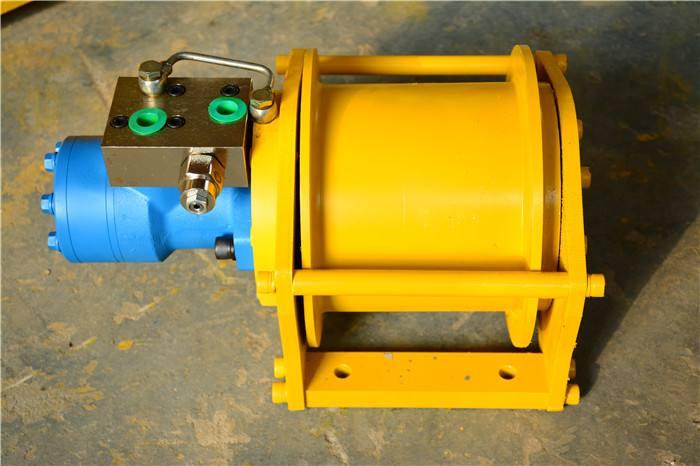16吨吊车液压绞车 16 ton crane hydraulic winch
16吨吊车液压绞车 16 ton crane hydraulic winch
16吨吊车液压绞车 16 ton crane hydraulic winch
- 产品详情
- 产品参数
液压卷扬机简介:
液压卷扬机的主要组成部分包括:起重机构、液压系统、控制系统等。其中,起重机构包括:卷筒、起重绳、制动器、加速器、泄压阀等;液压系统包括:液压泵、液压马达、液压管道、控制阀等;控制系统包括液压电机、多路阀、单向阀、节流阀等。这些组成部分共同工作,确保液压卷扬机能够稳定、可靠地完成起重、运输等作业。液压卷扬机的工作原理主要是液压传动系统,它通过将机械能转换为液压能,再利用执行机构将液压能转换成机械能来实现卷筒的运转,下面简单叙述一下液压卷扬机的工作过程:
1、起升起动过程:当液压系统中的涨闸涨紧卷筒,游星轮在中心轮的带动下旋转,从而带动内齿圈和卷筒旋转,卷筒再缠绕钢丝绳实现带动物体的升降。
2、起升制动过程:当液压系统中的抱闸刹住卷筒,卷筒和内齿轮同时被刹住不转,此时游星轮既自转又公转,实现制动重物。
3、下降启动过程:当液压系统中的涨闸和抱闸都松开,卷筒处于自由状态,在重物自重的作用下旋转,实现下降重物。
4、下降制动过程:当液压系统驱动重物以匀速下降时,施加制动,使重物从匀速下降减速到静止状态。
Introduction to hydraulic winch:
The main components of a hydraulic winch include: lifting mechanism, hydraulic system, control system, etc. Among them, the lifting mechanism includes: drum, lifting rope, brake, accelerator, pressure relief valve, etc; The hydraulic system includes: hydraulic pump, hydraulic motor, hydraulic pipeline, control valve, etc; The control system includes hydraulic motors, multi way valves, one-way valves, throttle valves, etc. These components work together to ensure that the hydraulic winch can stably and reliably complete lifting, transportation, and other operations. The working principle of a hydraulic winch is mainly the hydraulic transmission system, which converts mechanical energy into hydraulic energy and then uses the actuator to convert hydraulic energy into mechanical energy to achieve the operation of the drum. Below is a brief description of the working process of a hydraulic winch:
1. Lifting and starting process: When the expansion brake in the hydraulic system tightens the drum, the planetary wheel rotates under the drive of the central wheel, thereby driving the internal gear ring and the drum to rotate. The drum then wraps around the steel wire rope to achieve the lifting and lowering of the object.
2. Lifting and braking process: When the brake in the hydraulic system brakes the drum, both the drum and the internal gear are stopped from rotating. At this time, the planetary wheel rotates and revolves, achieving the braking of heavy objects.
3. Descent start-up process: When both the expansion brake and the holding brake in the hydraulic system are released, the drum is in a free state and rotates under the weight of the heavy object, achieving the descent of the heavy object.
4. Descent braking process: When the hydraulic system drives the heavy object to descend at a constant speed, apply the brake to slow down the heavy object from a constant descent to a stationary state.
